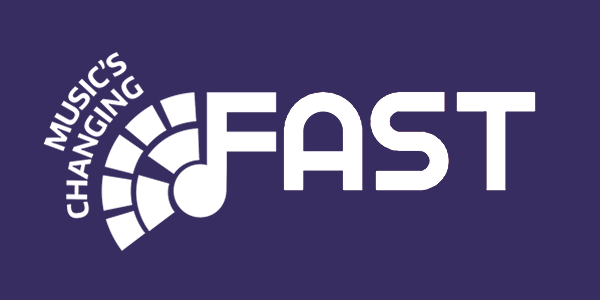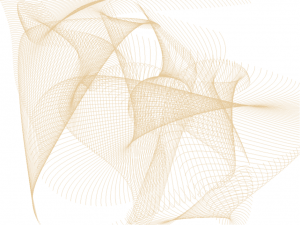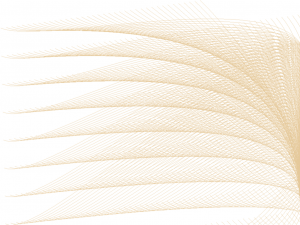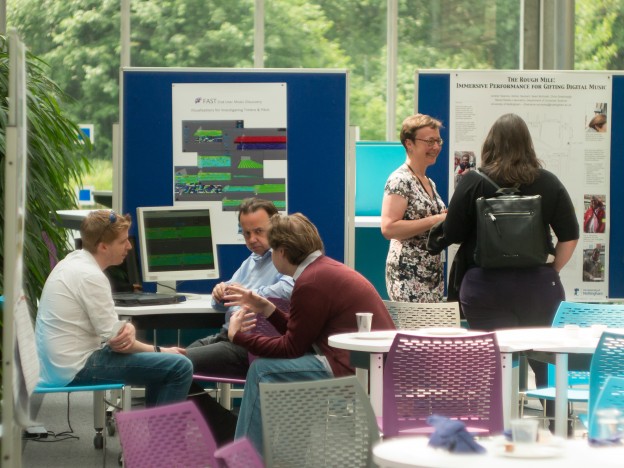
Author Archives: admin

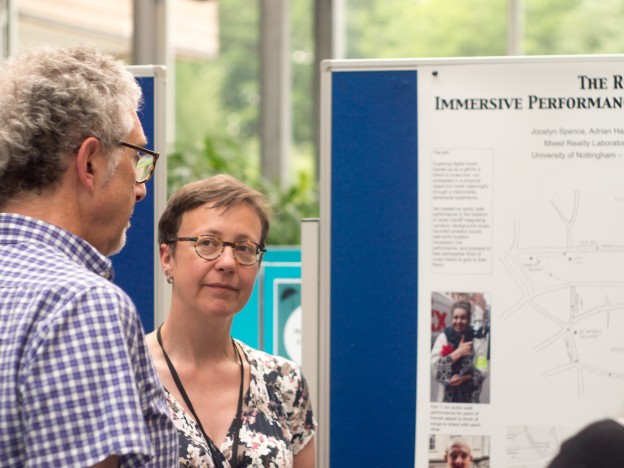
Photo 67: Nottingham workshop 8 June 2016
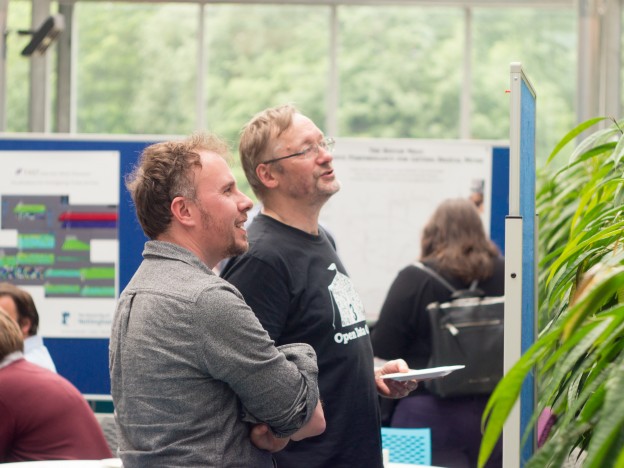
Photo 66: Nottingham workshop 8 June 2016
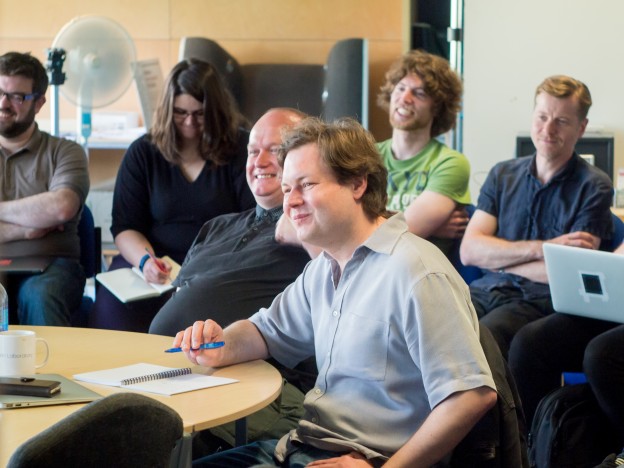
Photo 65: Nottingham workshop 8 June 2016
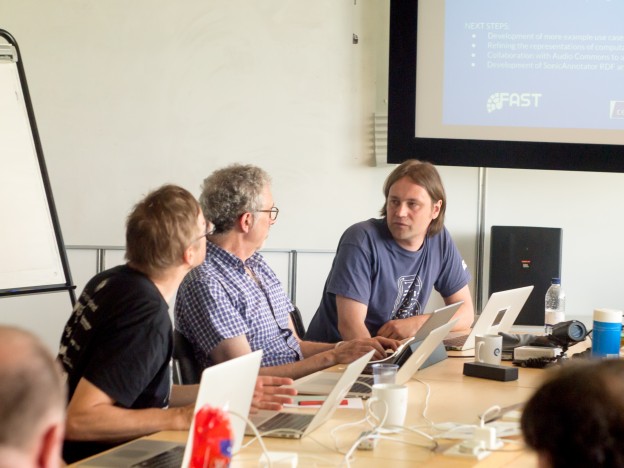
Photo 64: Nottingham workshop 8 June 2016
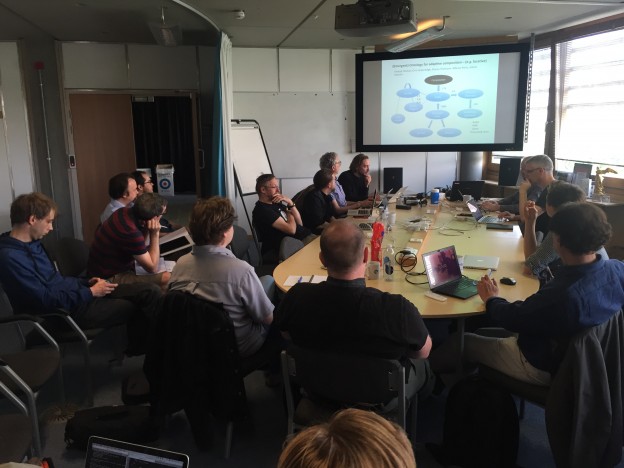
Photo 63: Nottingham workshop 8 June 2016
Linked data descriptions of live performances
by Graham Klyne, Oxford e-Research Centre, University of Oxford
The FAST project is exploring the notion of Digital Music Objects to carry information about all aspects of music, from creation and recording to distribution and consumption. Live performances place music consumers close to the performers of the music, and offer a particular experience as a starting point for exploring the output of an artist or group.
Our vision for creating Digital Music Objects describing live performances is to create a “Performance Digital Music Object” that augments the interaction between live performers and their audience, extending the experience beyond the performance itself, and providing access to a range of information that relates to the performance and its performers.
Working with the FAST team at Nottingham’s Mixed Reality Lab, and building on earlier work to use linked data to describe the Carolan Guitar’s story [1][2], we have been using Annalist [3][4] to create a description of a live performance given at The Maze in Nottingham by Carmina and the Phil Langran Band.
The linked data model we are developing draws upon terms from W3C PROV [6], CIDOC CRM [7], FRBRoo [8] and Music Ontology [9], and in so doing aims to situate the live performance in a context that includes the music performed, the people performing it and the time and place at which the performance took place [5]. By sharing terms with other linked data descriptions, such as the Carolan Guitar’s story, we also allow the performance (which featured the Carolan Guitar) to be connected with a wider range of topics that could be of interest to the audience present.
We have work in progress to allow the data created using Annalist to be used in conjunction with a user-facing web site that presents the information for audience members to access, and provides a route for audience feedback to the performers.
Creating linked data descriptions of musical objects and events is informing the development of Annalist, which is a tool for quickly creating web linked data using any combination of ontologies. Annalist is being created as an independent open development, and is being used within the FAST project to prototype linked data models, exploring the use and expressivity of existing ontologies for describing concepts being explored by FAST.
Taking a wider view of FAST project activities, the aim is that the prototyping work with Annalist can provide a bottom-up proving of requirements coming from specific scenarios and user stories, as a complement to top-down design and adoption of ontologies, to reveal any gaps in the adopted ontologies and to guide the design of additional vocabulary terms to fill these gaps. Annalist may also help to improve time to deployment of applications that depend on newly adopted ontologies by providing rapid prototype tools for data entry and management.
[1] S. Benford, A. Hazzard, A. Chamberlain, K. Glover, C. Greenhalgh, L. Xu, M. Hoare and D. Darzentas. 2016. Accountable Artefacts: The Case of the Carolan Guitar. In Proceedings of the 2016 CHI Conference on Human Factors in Computing Systems (CHI ’16). ACM, New York, NY, USA, 1163-1175. DOI=http://dx.doi.org/10.1145/2858036.2858306
[2] http://fast-project.annalist.net/annalist/c/Carolan_Guitar/
[3] G. Klyne, C. Willoughby, K.R. Page. Annalist: A practical tool for creating, managing and sharing evolving linked data. Linked Data on the Web Workshop 2016. To appear in CEUR Workshop Proceedings (CEUR-WS.org) Vol-1593.
[4] http://annalist.net/
[5] http://fast-project.annalist.net/annalist/c/Performances/
[6] T. Lebo et al. PROV-O: the PROV ontology. W3C Recommendation. W3C, Apr. 2013. url: http://www.w3.org/TR/prov-o/
[7] P. Le Bœuf, M. Doerr, et al. Definition of the CIDOC conceptual reference model, version V6.2. Tech. rep. International Council of Museums, May 2015. url: http://www.cidoc-crm.org/docs/cidoc_crm_version_6.2.pdf
[8] C. Bekiari, M. Doerr, and P. Le Bœuf, eds. FRBR – object-oriented definition and mapping to FRBRer (version 1.0). 1.0 ed. May 2009, 1.0 ed., 2009. url: http://www.cidoc-crm.org/docs/frbr_oo/frbr_docs/FRBRoo_V1.0_draft__2009_may_.pdf
[9] http://musicontology.com
External Artist Programme: Mixed Reality Lab collaboration with Ron Herrema
by Sean McGrath, Mixed Reality Laboratory, University of Nottingham
As part of the FAST project, the MRL are hosting a number of artists in residence. One of those collaborations is with an artist Ron Herrema, as part of the partnership with B3 Media. In collaboration with the MRL Ron is developing an iPad application. Infinity is a graphically and sonically generative application and follows a similar audiovisual experience to that of Ron’s previous creation for the iPhone, Dancing Wu Wei. His previous curation is freely downloadable from the app store.
The app uses touch interaction to modify the audio/visual elements generated and to create an interactive experience. Infinity explores the concept of user experience from multiple perspectives. As a piece of art, as a tool for contemplation and as a tool for engagement. Ron is currently undertaking a body of work which focuses on a human-centred design methodology. He is iterating through designs based on feedback from five core users, using the app in a variety of contexts. The feedback from these users is driving further iterative developments in the application.
The work so far has highlighted a number of key themes of interest. These are as follows:
- Immersion/Engagement
- Interactivity/gestures – Orientation
- Control and emergent flow – Discovering interactive elements
- Scheduling and the relevance of context
- Metaphors of use
The next stage of the work involves hosting a workshop. During the course of this workshop, participants will be observed using the application and then asked a series of questions relating to their experiences. The workshop will inform future design and development changes in the application.
The application will shortly be entering the beta testing phase. If you are interested in beta testing the application and offering feedback to the research team then feel free to contact sean.mcgrath@nottingham.ac.uk with an expression of interest.
Related links:
https://vimeo.com/100254134
http://ronherrema.net
FAST in full force at the ACM’s annual Computer-Human Interaction conference
By Steve Benford, Mixed Reality Lab, Nottingham University and Mathieu Barthet, Centre for Digital Music, Queen Mary University of London
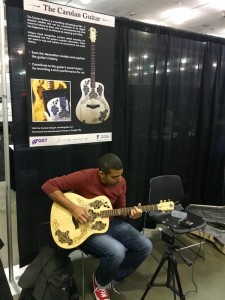 The FAST project was in full force at the ACM’s annual Computer-Human Interaction conference – widely known as CHI – in San Jose in May. CHI is the leading conference for research into interfaces and interaction and was attended by over 3,000 delegates this year.
The FAST project was in full force at the ACM’s annual Computer-Human Interaction conference – widely known as CHI – in San Jose in May. CHI is the leading conference for research into interfaces and interaction and was attended by over 3,000 delegates this year.
First up for FAST was our work on the Carolan guitar as an example of an ‘accountable artefact’ a physical object that can becomes associated with a growing digital record and it is passed among different custodians over its lifetime and that can interrogated to tell various stories of provenance, use or personal meaning based on this. Our research paper on Carolan was well received, winning a “Best of CHI” honorable mention (awarded to the top 5% of all submissions) and also being nominated for a Best Art paper (the first year for this category).
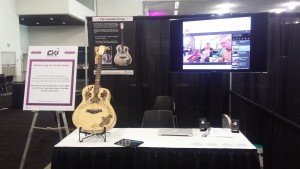 We also presented Carolan as an exhibit at Interactivity, CHI’s hand-on programme of exhibits. Our stand was popular, enjoying a constant stream of visitors, including several who were recorded playing the guitar (see our blogpost at https://carolanguitar.com/2016/05/13/56-chi/).
We also presented Carolan as an exhibit at Interactivity, CHI’s hand-on programme of exhibits. Our stand was popular, enjoying a constant stream of visitors, including several who were recorded playing the guitar (see our blogpost at https://carolanguitar.com/2016/05/13/56-chi/).
FAST also contributed a paper on brain-controlled interfaces for entertainment, specifically a study of the design and experience of our associate artist (and PhD student) Richard Ramchurn’s unique movie #Scanners. This paper introduces an unusual taxonomy for designing brain-computer control of digital media in which participants’ extent of voluntary control, as well as their conscious awareness of this control, varies throughout an experience. We were excited to win the Best Art Paper award for this paper, adding to FAST’s haul of certificates.
Richard, Matthew and the team also exhibited #Scanners at CHI Interactivity, attracting great interest and invitations to stag the work elsewhere.
Several FAST demonstrators were presented in our review paper « Crossroads: Interactive Music Systems Transforming Performance, Production and Listening » (http://bit.ly/crossroadsMusicHCI) at CHI 2016’s Music and HCI workshop which gathered international experts and pioneers of the field of Music Interaction. The workshop which proved very successful will lead to the publication of a book aiming to reflect on the latest research in Music and HCI and to strengthen the dialogue between the music interaction community and the wider HCI community.
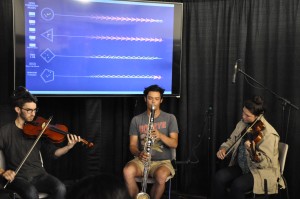
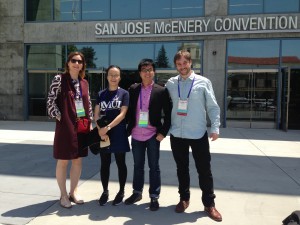 FAST innovated during CHI’s Interactivity session being the only project to propose a series of live interactive music performances during which conference attendees became not only listeners but truly engaged in the music creation process. This was orchestrated by the Open Symphony team (Yongmeng Wu, Leshao Zhang, Kate Hayes, Mathieu Barthet) who showcased their participatory music system enabling audience members to generate live graphic scores for directed improvisations using mobile phones (http://bit.ly/opensymphonyCHI2016). The project lead to a fruitful collaboration with talented local musicians from University of California Berkeley and their Center for New Music and Audio Technologies (CNMAT) who were rehearsed prior to the conference. The Open Symphony musical and technical system sparkled the interest of many CHI attendees during the exhibition and the performances welcomed several hundreds of participants who actively engaged with the music. It was not only a genuine way to demonstrate new music composition and listening paradigms through computer-supported cooperative music creation but also to reach a wider audience and collaborate with local performers, as one element of the term ‘Open’ relates to the participatory nature of the project.
FAST innovated during CHI’s Interactivity session being the only project to propose a series of live interactive music performances during which conference attendees became not only listeners but truly engaged in the music creation process. This was orchestrated by the Open Symphony team (Yongmeng Wu, Leshao Zhang, Kate Hayes, Mathieu Barthet) who showcased their participatory music system enabling audience members to generate live graphic scores for directed improvisations using mobile phones (http://bit.ly/opensymphonyCHI2016). The project lead to a fruitful collaboration with talented local musicians from University of California Berkeley and their Center for New Music and Audio Technologies (CNMAT) who were rehearsed prior to the conference. The Open Symphony musical and technical system sparkled the interest of many CHI attendees during the exhibition and the performances welcomed several hundreds of participants who actively engaged with the music. It was not only a genuine way to demonstrate new music composition and listening paradigms through computer-supported cooperative music creation but also to reach a wider audience and collaborate with local performers, as one element of the term ‘Open’ relates to the participatory nature of the project.
FAST partners participate in the annual CHI conference
 The FAST project was in full force at the ACM’s annual Computer-Human Interaction conference – widely known as CHI – in San Jose in May. CHI is the leading conference for research into interfaces and interaction and was attended by over 3,000 delegates this year.
The FAST project was in full force at the ACM’s annual Computer-Human Interaction conference – widely known as CHI – in San Jose in May. CHI is the leading conference for research into interfaces and interaction and was attended by over 3,000 delegates this year.
First up for FAST was Nottingham team’s work on the Carolan guitar as an example of an ‘accountable artefact’ a physical object that can becomes associated with a growing digital record and it is passed among different custodians over its lifetime and that can interrogated to tell various stories of provenance, use or personal meaning based on this. Their research paper on Carolan was well received, winning a “Best of CHI” honorable mention (awarded to the top 5% of all submissions) and also being nominated for a Best Art paper (the first year for this category). The Nottingham FAST team (Mixed Reality Lab) also presented Carolan as an exhibit at Interactivity, CHI’s hand-on programme of exhibits. FAST also contributed a paper on brain-controlled interfaces for entertainment, specifically a study of the design and experience of our associate artist (and PhD student) Richard Ramchurn’s unique movie #Scanners. Richard, Matthew and the team also exhibited #Scanners at CHI Interactivity, attracting great interest and invitations to stag the work elsewhere.
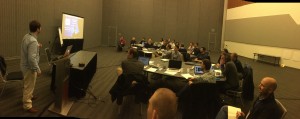 Queen Mary University of London’s FAST team participated in the CHI 2016’s Music and HCI workshop and gave Open Symphony performances at the CHI’s Interactivity session. Several FAST demonstrators were presented in their review paper “Crossroads: Interactive Music Systems Transforming Performance, Production and Listening” (http://bit.ly/crossroadsMusicHCI) at the Music and HCI workshop which gathered international experts and pioneers of the field of Music Interaction.
Queen Mary University of London’s FAST team participated in the CHI 2016’s Music and HCI workshop and gave Open Symphony performances at the CHI’s Interactivity session. Several FAST demonstrators were presented in their review paper “Crossroads: Interactive Music Systems Transforming Performance, Production and Listening” (http://bit.ly/crossroadsMusicHCI) at the Music and HCI workshop which gathered international experts and pioneers of the field of Music Interaction.
Read more about this news item on our FAST blog.
Related links:
https://www.nottingham.ac.uk/ComputerScience/Outreach/Carolan-Guitar.aspx
http://isophonics.net/content/opensymphony
